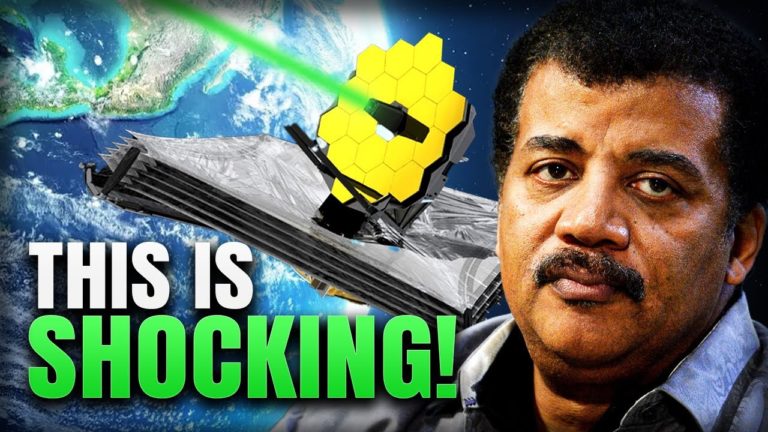Can The James Webb Telescope POSSIBLY See The Creation Of The Universe?
What is the origin of this universe?
What was it like before the big bang, and are we alone in this vast universe?
These are just a few of the many questions that have kept some scientists awake at night for years.
They devised numerous initiatives and missions in order to learn as much as possible about our existence and creation, but there wasn’t any technology that can show us all that. It took decades for the scientists to build a massive telescope, the James Webb Space Telescope that is supposed to explain to us the creation of this universe.
But the question is, is this JWST capable of doing so? Welcome to Cosmos lab, your one station for all the news from space. Join us in today’s video to find if the James Webb Telescope can answer our creation or not.
The James Webb Space Telescope (JWST) has begun its mission to image the birth of the universe after a nail-biting launch on Christmas Day. The $10 billion James Webb Space Observatory, NASA’s largest and most powerful space research telescope, will explore the cosmos to learn about the universe’s history, from the Big Bang to the birth of alien planets and beyond. It is one of NASA’s Great Observatories, huge space instruments that include the likes of the Hubble Space Telescope to peer deep into the cosmos.
JWST will go back in time more than 13.5 billion years to witness the faint infrared light from the first galaxies, illuminating a previously unseen period of cosmic history that shaped the universe as we know it today. According to NASA, JWST was designed not to see the beginnings of the universe, but to see a period of the universe’s history that we have not seen yet before.
The concern here is that can James Webb perform these functions or how is it going to see through thousands of light-years? James Webb Space Telescope is a cosmic time machine that can view galaxies and stars as they were as few as 100 million years after the Big Bang, the universe’s unimaginably catastrophic birth.
Webb will cover longer wavelengths of light than Hubble and will have greatly improved sensitivity. NASA said on its website, the longer wavelengths will enable Webb to look further back in time to see the first galaxies that formed in the early universe.
John Mather, the mission’s senior project scientist at NASA’s Goddard Space Flight Center in Maryland said, “This telescope is so powerful that if you were a bumble bee 240,000 miles away, which is the distance between the Earth and the moon, we will be able to see you.”
How is this even possible?
The JWST is equipped with four science instruments that will enable observations in visible, near-infrared, and mid-infrared wavelengths. Infrared light is electromagnetic radiation with wavelengths longer than visible light but shorter than radio waves.
Paul Geithner Deputy Project Manager – Technical for the James Webb Space Telescope at NASA‘s Goddard Space Flight Center explains that there are several reasons to study in the infrared. One reason is that the ultraviolet and visible light released by the universe’s first luminous objects when it was young has been stretched by the expansion of the cosmos and now reaches us as infrared light, nearly 13 billion years later. Webb will be on the lookout for the first rays of light.
Another explanation is that stars and planets are formed in gas and dust clouds, which obscure our perspective. We can see inside these clouds because infrared light penetrates them. It’s unclear how the cosmos evolved from a simpler state of hydrogen and helium to the universe we see today, but the Webb telescope will glimpse far-flung realms of space and a period of time never seen before, assisting us in answering these crucial questions.
Webb will conduct ultra-deep near-infrared surveys of the Universe in order to find the first galaxies, followed by low-resolution spectroscopy and mid-infrared photometry. High-resolution near-infrared spectroscopy will be required to investigate reionization.
With this, the James Webb Space Telescope is going to see things that have never been seen before. So maybe it will help us to finally find out about our existence.
John Mather says, “what are we going to do with this great telescope? We’re going to look at everything there is in the universe that we can see.” He further said, “We want to know how did we get here. The Big Bang, how did that work? So we’ll look. We have ideas, we have predictions, but we don’t honestly know.”
To find the answers, the science mission of JWST is divided into four sections. First light and reionization. Assembly of galaxies. Birth of stars and protoplanetary systems and Planets and origins of life.
First light refers to the universe’s early stages after the Big Bang when the universe as we know it today began.
Do not forget to share your opinion with us to provide you with the best posts !




0 Comments